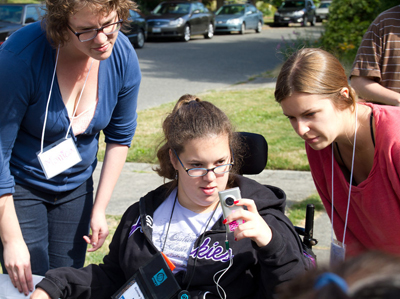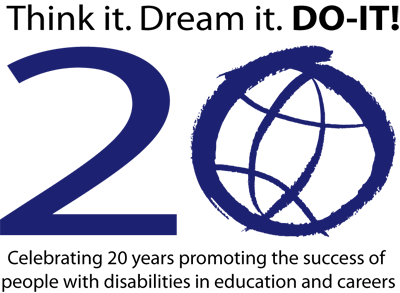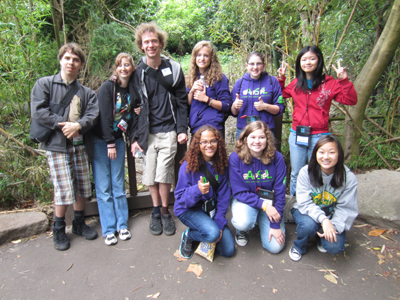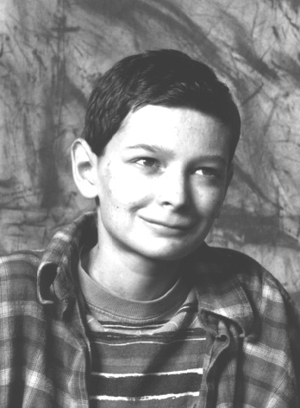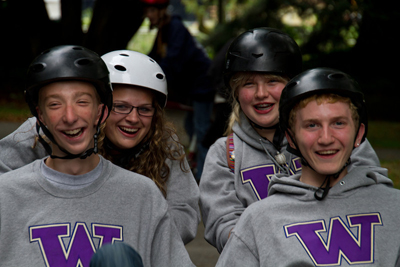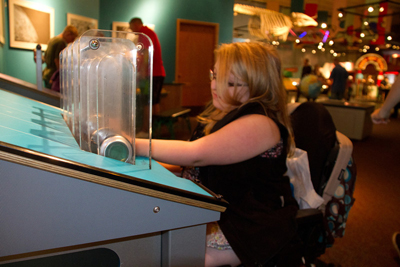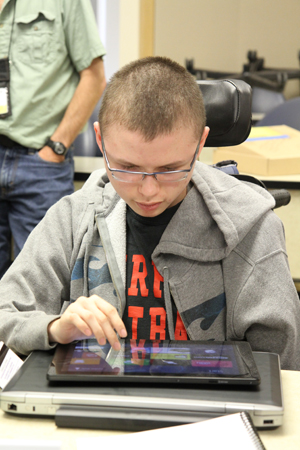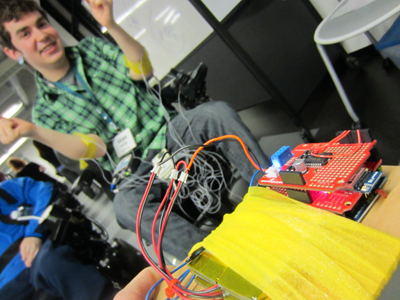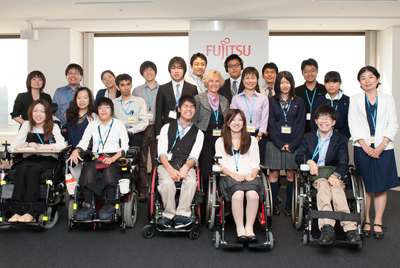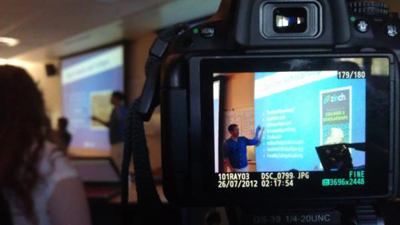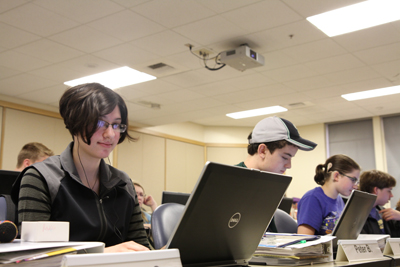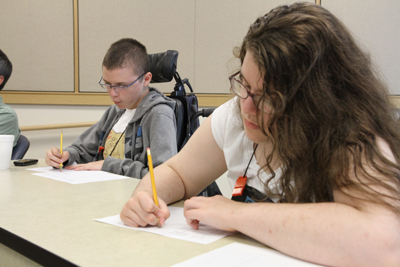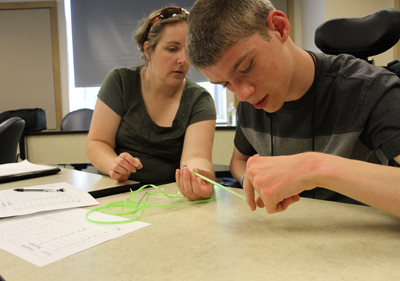When Scholarship Junkies visited DO-IT during Summer Study 2012, the topic of scholarship scams came up in our discussion of all things scholarships. What a great topic to discuss!
Scholarship Junkies gives a presentation to the Scholars on how to find the best scholarships and how to avoid scams.
With so many students, parents, and families searching for scholarships, there are inevitably a small handful of people who want to exploit their needs by stealing personal information and money. It's important to understand how to identify "scholarship opportunities" that might actually be scams.
During the presentation, we discussed a few general rules of thumb:
- If a scholarship application asks for an "application fee" of any amount (it could be as little as $2 or as much as $25), skip it. No legitimate scholarship should be charging an application fee.
- If you're contacted out of the blue and awarded a scholarship for which you did not apply (or do not remember applying to), do not submit any personal information they request. You rarely win scholarships for not doing anything. Unless you applied for it directly or indirectly (e.g. through a scholarship application or as part of a college application), it's probably a scam.
- If a scholarship website you're using to find scholarship opportunities (we call these "scholarship clearinghouses") asks for sensitive personal information such as your Social Security number, a credit card number, or your mother's maiden name, do not use it. Scholarship clearinghouses should not be requesting this information.
Once you've found legitimate scholarship opportunities, the hard work is to make your application stand out competitively and personably. A scholarship is an organization's financial investment in their recipients' academic ability, potential to succeed, and best embody the organization's core values. Keeping this definition of scholarships in mind, it's important then for students to make themselves stand out. Here are a few ways to make an application stand out.
- Develop a strong track record. Track records can include academic achievements, community and extracurricular activities, or jobs/work responsibilities you might have. Why you did something is as important—if not more so—than what you did.
- Gather insightful support. If letters of recommendation and references are required, ask teachers, counselors, coaches, etc. who know you very well to write you strong letters of support. Their titles and positions are important, but even more important is their relationship to you. They have to be able to talk about you in more ways than just what's on your transcript or resume.
- Share your personal story. Essays are arguably the most critical component of a competitive scholarship application. It's your only chance to really make yourself stand out from all the other applicants that will also have grades, test scores, activities, and track records. Your essay is your voice. Do not be afraid to use "I" and to share your personal story.
In the same manner that I found ways to share about my neurological movement disorder in many of my essays, so too should you find ways to talk about the personal experiences that have shaped you. For me, growing up with dystonia forced me to mature faster than my friends. It required me to very responsible at a young age, but the medical treatment I received inspired me to use my "second chance" to achieve ambitious goals. My personal life story and experiences drive me to do what I do.
As you think about how to shape your application, think about the theme you want the judges to see clearly in all of your components. Is it a theme of leadership? Intellectual curiosity coupled with action? Perseverance in the face of any adversity? The ways in which you share your story and experiences dictate how others see you too.
Now, I completely empathize with students who shy away from writing. It's hard stuff! But practice makes perfect, and without all the mentors and teachers who so graciously provided me constructive criticism, I would never have experienced the scholarship success I did.
You have just as many—if not more—wonderful resources around you to help you through your scholarship journey. The DO-IT program, Scholarship Junkies, and your educational environment are just some of these. Never be afraid to ask for help. It takes courage to ask for help, but if you do, I guarantee you will be better off for it.
Scholarship Junkies pledges to be there with you every step of the way. Our team of dedicated volunteers and mentors who genuinely care about your success are willing to work with you as you craft, write, and edit your scholarship essays. We instituted a three-draft policy on any given scholarship essay, so we can serve as many students possible. But the key is that you have free help waiting to work with you.
In closing, I hope you'll pursue your scholarship journey rigorously and ambitiously. The news around us tells us that college tuition is skyrocketing and that student debt is exploding exponentially. There's no doubt they are, but thankfully, there are opportunities like scholarships to help ease the costs of obtaining a college degree—and organizations like Scholarship Junkies ready to work with you to meet your goals.
If you're concerned or have questions, you are welcome to email our Scholarship Junkies team at secrets@scholarshipjunkies.com
Samson Lim is the Founder and Executive Director of Scholarship Junkies, LLC. Driven by his experiences of applying for over 75 scholarships and winning 18, Sam founded the Seattle-based scholarship resource program to connect scholarship applicants with recent scholarship recipients in an effort to help students find ways to afford higher education. Every year since 2008, Scholarship Junkies has facilitated a scholarship workshop at DO-IT's Summer Study.
